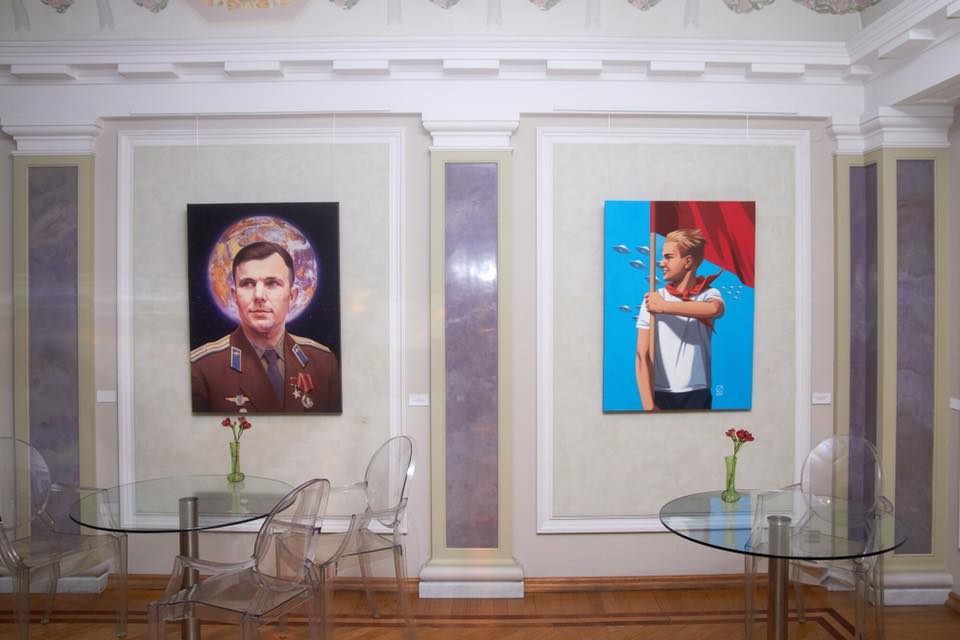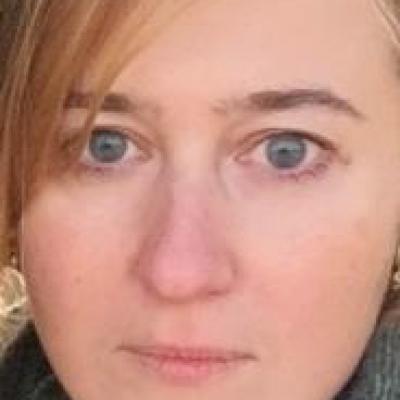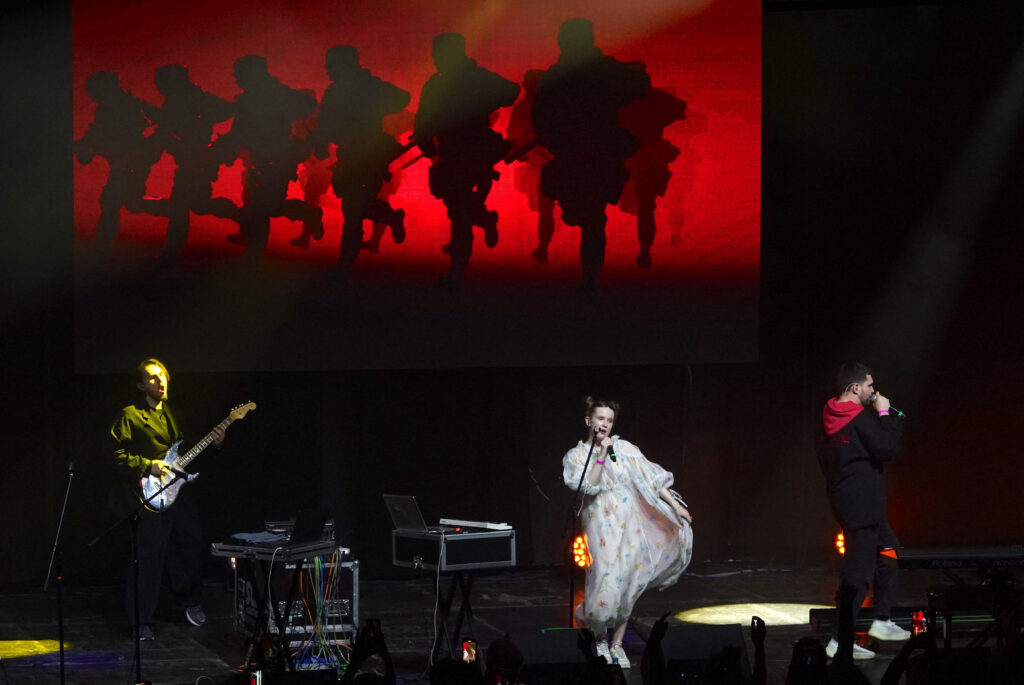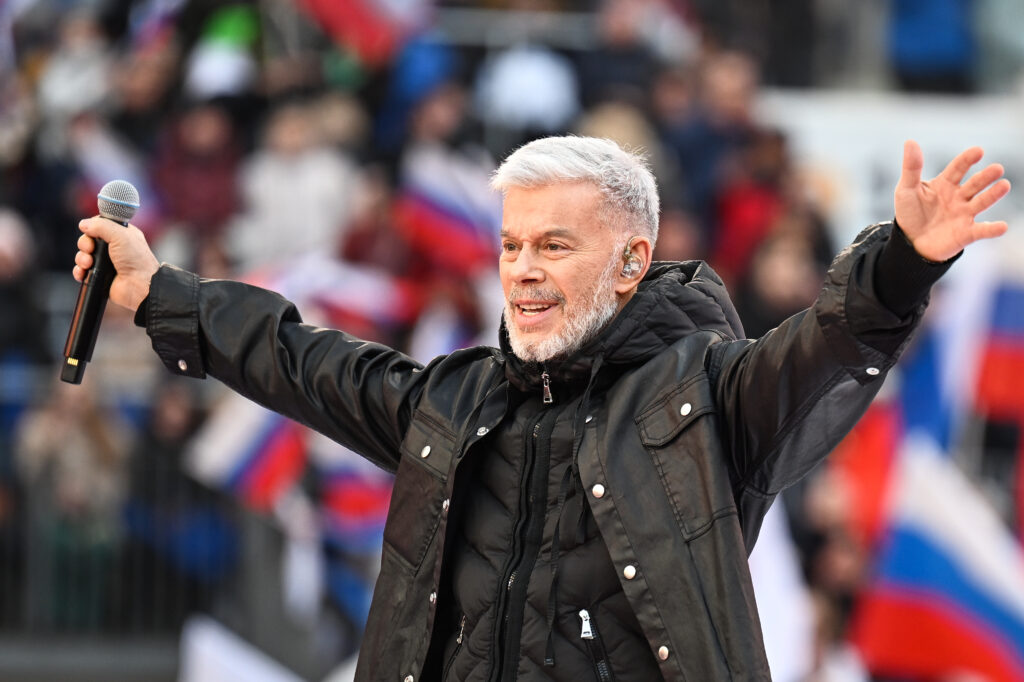Today’s era of post-Crimean polarisation — defined by its new ideological and military standoff between Russia and the West — has created an atmosphere that was already very present within Russia’s counterculture during the late 1980s and the first half of the 1990s. Back then, in Russia’s counter-cultural circles, the late-Soviet ideal of Russia as a future part of an ‘imaginary West’ began to collapse away into the mainstream, while the image of Russia as part of an ‘imaginary Anti-West’ took root: Aleksandr Dugin’s neo-Eurasianism and Eduard Limonov’s national-Bolshevism both emerged on the fringe at this time. Today, that vision of forming part of an ‘imaginary West’ is fast seeping out of the mainstream; the patriotic ideas that once superseded that vision in Russia’s counter-culture have in turn now done so in the mainstream context.
Right at the forefront of contemporary thought is a utopian vision of an ideological and aesthetic alternative to a western “first world” — which is leading to an accelerated, retrospective canonisation of a wide variety of counter-cultural icons from the late Perestroika years and the early 1990s, who are often manipulated to serve a fresh political purpose.
Researchers of Russian political visuality should turn their attention to the fashion and music industries, which give clear indications of evolving ideological re-interpretations. The style and energy of perestroika-era fashion and music were largely determined by the protest aesthetics of the Leningrad underground movement — primarily the music of the Kino band and the image of its leader Viktor Tsoi, presented in Sergei Soloviev’s movie entitled ‘Assa’ (1988). An equally strong political symbol of disappointment with the 1990s market reforms and the return to patriotism in the 2000s was the work of Yegor Letov and ‘Grazhdanskaya Oborona’, Vyacheslav Butusov and ‘Nautilus Pompilius’. Moreover, Sergei Bodrov, who created the image of a romantic Russian killer in Alexei Balabanov’s movies ‘Brat’ (Brother) (1997) and ‘Brat-2’ (Brother 2) (2000), became the hero of the generation.
Viktor Tsoi: Resurrection of ‘the last hero’
The nation-wide reverence for the leader of Kino group began right after his death in 1990, when walls all over Russia were covered with graffiti reading “Tsoi is alive.” The reverence remained steady throughout the 1990s and 2000s, and yet in recent years we have seen a new round of canonisation and appropriation of his symbolic capital (epitomised by both his music and visual images) by various political forces. During the perestroika years, Viktor Tsoi represented the myth of the “last hero” — an individual set against the collective Soviet myth, and became a symbol of resistance and freedom from surrounding oppression. By contrast, the songs of Kino are increasingly part of another ideological context: a patriotic narrative of Russia’s own dogged resistance to “the forces of evil” (i.e. the West), and Tsoi himself morphs into a hero of “the Russian world.”
In January 2018, at the European Figure Skating Championships, Yevgenya Medvedeva was wearing leather trousers and a sweatshirt with a unicorn as she danced a skating routine to Viktor Tsoi’s song ‘Kukushka’ (Cuckoo) performed by Polina Gagarina, confronting a hostile rest of world by showing a girl’s gentle hand that has already turned into a fist. This song by Tsoi was included in the soundtrack of the movie ‘Battle for Sevastopol’ (2015), and was reinvented as ‘a song about the war’, thus becoming a patriotic anthem of post-Crimean Russia, collecting over 86 million views on YouTube.
If we take the most discussed TV series of 2017 entitled ‘Spyashiye’ (The Sleeping), a Kino T-shirt is worn by a computer guy who works for the FSB and who opposes American special services agents. Tsoi’s song entitled ‘Gruppa Krovi’ (Blood Type) is used as a background for the dance performed by Givi (Mikhail Tolstykh), the commander of the ‘Somali’ military unit and one of the leaders of the ‘Donetsk National Republic,’ killed in 2017. Vyacheslav Surkov suggested that the latest Russian weaponry system, presented by President Putin in his address to the Federal Assembly 2018, should be named after Givi. There was a good reason why the head of the National Remembrance Institute of Ukraine Vladimir Vyatrovich made an appeal to ban Tsoi (along with Vysotsky, Pugacheva, Bulgakov, the 8 of March holiday and the film ‘Ironiya Sud’by’ – The Irony of Fate”) as an “exquisite tentacle of the Russian world,” used by the Kremlin to preserve its imperial cultural hegemony.
The new round of canonisation is accompanied by a struggle for the right to interpretation. Films about Viktor Tsoi have been shot by Kirill Serebrennikov, Alexey Uchitel and former guitarist of Kino Alexei Rybin. Serebrennikov’s film ‘Leto’ (Summer), which tells the story of the summer of 1981 and the love triangle involving Viktor Tsoi, Mike Naumenko (frontman of Zoopark) and Mike’s wife Natalya, aroused criticism before its release from some participants of the late Soviet musical underground: Boris Grebenshchikov, Alexei Rybin and Andrei Tropillo. Grebenshchikov called the script of the movie “a lie from start to finish,” while Tropillo (Kino’s albums were recorded in his studio) described ‘Leto’ as “abominable” and “wretched” and ominously predicted that if Serebrennikov completes the movie, he will certainly end up in jail.
Even before its release, the movie has provoked some protests that were similar in their type to the protests against other movies, i.e. ‘Matilda’(2017) and ‘Smert Stalina’ (The Death of Stalin, 2017). The negative reactions are largely associated with the rumour that in ‘Leto,’ Serebrennikov depicts Tsoi as a gay man, making him part of the (Western) queer narrative. The rumours about this unconventional interpretation is regarded as an encroachment on the nation’s ‘sexual sovereignty’ and the sacred cultural hero, and as an attempt to discredit and weaken the hero’s mobilisation potential.
However, in addition to being morphed into agents of the ‘Russian world’, liberal citizens also make demands for authenticity and heroism from cultural figures of that era, and try to inspire a perestroika-2 by turning to the iconic figures of perestroika-1. The song ‘My zdyom peremen’ (We are waiting for change) were heard at the Bolotnaya Square in 2011. In 2017, to celebrate Tsoi’s 55th birthday, Yandex shot a video (a single continuous take) for the song ‘Zvezda po imeni Solntse’ (A Star Called the Sun), where this song is sung by Saint Petersburg celebrities as well as ordinary citizens and guests of the cultural capital. The video is set in Leningrad/Saint Petersburg and spans four eras, from the 1980s to the present day. The clip is filled with allusions and visual citations, referring to the pop culture of perestroika times and the post-Soviet period. According to the authors of this tribute, what connects all these eras and creates continuity is the music of Kino: after all, the total listening time for Tsoi’s songs on Yandex has already exceeded 1000 years.
Gosha Rubchinsky and the aesthetics of ‘alternative globalization’
In recent years, we can see how the symbolic capital of the perestroika era and the youth culture of the 1990s is being revived by the fashion industry and included in the development of a new Russian style. The main agents of the new aesthetics, which has already been announced in the global fashion industry, are designer Gosha Rubchinsky (b.1984), the creative director of the House of Balenciaga and Demna Gvasalia (b.1981), the co-creator of the Vetements brand, as well as Lotta Volkova (b.1984), the leading stylist of Vetements, Gosha Rubchinskiy and Balenciaga brands.
This ‘post-Soviet trinity’, who spent their childhood in the perestroika times in the USSR (Moscow, Sukhumi and Vladivostok, respectively), became leaders of a new round of avant-garde anti-fashion for the global generation of post-Millennials. Volkova, Gvasalia and Rubchinsky were better and faster than others to sense the spirit of the times, the end of demonstrative consumption and the demand for identity-building through cultural stereotypes. They returned to the long-forgotten poor and squalid clothes of the post-Soviet street bazaars of the 1990s, and created a new global style. The designers of the new Russian wave contrasted the old ‘Russian style’, with its Moscow beauties, the house of the Romanovs, vodka, caviar and bears, with the cultural codes of the Eastern bloc from the period of disintegration, the style of perestroika and the post-perestroika decade, combining the energy of transition with the melancholy of unfulfilled expectations.
As part of the same phenomenon, we should mention Avdotya Alexandrova(b.1990), a movie director and owner of the agency of non-standard Russian models Lumpen. Alexandrova searches around the world for young Russian men and women who have a counter-model appearance, creating a visual library of the global ‘Russian world’. Those unconventional types attract attention of the leading fashion houses because they demonstrate a ‘different’ beauty canon and individuality and represent a challenge to the glossy standards of ‘the first world’.
As Alexandrova herself says in an interview given to the Dozhd TV channel, she is a Russian patriot and wants to present ‘the Russian alternative’ to the whole world and, unlike the official ‘Russian World’ project, she has been successful so far. The rough types from Lumpen’s library have some kind of ominous yet elegant subjectivity. This is why this style is also described as ‘thugs in Paris’, which creates references, on the one hand, to the rich cultural tradition of Russia in Europe and, on the other hand, to the military victories in the 19th and 20th century wars and the triumphal marches of Russians across Europe. The most famous Lumpen model, the 19-year-old Vsevolod Cherepanov, founded a street brand ‘Sever’ (North) in 2016. The brand’s debut collection with hoodies bearing the inscription ‘Russian Mafia New World Order’ became a worldwide hit. In 2017, the brand continued its successful marketing move, releasing hoodies with a Kalashnikov rifle.
The first show of the 2008 Gosha Rubchinsky men’s collection called ‘The Evil Empire’ has already defined the ideological profile of the new Russian fashion: the reconstruction and remake of the transition era (1980s and 1990s), the role of ‘the enemy of the free world’ and ‘the global hoodlum’, and the creation of a radical aesthetic alternative. When building his own fashion narrative (which includes not only clothes but also exhibitions, photo albums, movies, soundtracks and show venues, models’ personal stories, collaboration projects, etc.), Rubchinsky appropriates and capitalises on all the clichés and stereotypes of the Cold War that became relevant again after 2014.
Very young models with the appearance of seductive criminals present ambivalent queer images of the bearers of the ‘ evil empire’, a poor yet sexy subject of ‘the second world’ and alternative globalisation. The signature characteristics of this style are texts in the Cyrillic alphabet and references to the Soviet canon of military and sports style (inscriptions such as ‘Russia’, ‘Enemy’, ‘Football’, ‘Ready to work and defend’), quotes from artists and musicians of the unofficial culture of the late Soviet era (a collection with the works by Timur Novikov and Erik Bulatov, inscriptions ‘ASSA’ or ‘Russian Renaissance’) or references to the Russian avant-garde (Malevich), homages to the rave club culture of the 1990s (‘Vostochnyi Udar’). The shows are organised in public places that are associated with the disciplinary practices of Russia and the USSR (churches, stadiums, cultural centres), or with the main spaces of the 1990s youth counterculture (rave squats and dilapidated houses in cities).
Rubchinsky’s last three collections were shown in Russia (Kaliningrad, Saint Petersburg and Yekaterinburg), which is unique for the fashion industry that stays in Paris, Milan, New York and London. The choice of Kaliningrad, which is a militarised zone and the home base of the Baltic Marine Fleet as the venue for the 2017 autumn-winter collection should be viewed not only as a marketing message, but also as an ideological gesture. The collection was created in collaboration with adidas Football and contains aesthetical references to Soviet-German ties, to military dandyism and the subculture of football fans with their aggressive nationalist rhetoric. Having initiated the decentralisation of fashion shows, Rubchinsky began the destruction of the symbolic domination of the West in the production of visual/ideological images: ‘I chose Kaliningrad as a tribute to adidas. In Russia and the USSR, sports teams always wore that brand. I want to prove that global ideas can be presented also in small Russian towns. I want to demonstrate the end of globalization.’
Rubchinsky’s most recent collection (autumn-winter 2018) was presented in January 2018 in Yekaterinburg (formerly Sverdlovsk), which was one of the main centres of the alternative culture of the 1980s and 1990s. The Yeltsin Centre hosted the catwalk featuring Russian boys wearing Dr. Martens boots, Levi’s jeans, Burberry trench coats, Adidas sports suits bearing the inscription ‘Россия’ (Russia), military shirts and black sweaters reading ‘Враг’ (Enemy), which contained references to the 1990s Limonovsty aesthetics (black shirts, red and white armbands on sleeves). The chaotic movements on the stage accompanied by intermittent music played on various musical instruments was an homage to Sergey Kuryekhin’s Pop Mekhanika band. At the end of the show, the choir of models sang the song ‘Goodbye, America’ by Vyacheslav Butusov, a reference to the famous ‘Brother 2’ movie: this song was used in the scene when the protagonist Danila Bagrov was flying home from America.
This collection by Rubchinsky is interesting because it cites the cultural codes of the 1990s and reconstructs the context of the first disappointment after a close encounter with the West, but it also coincides with the current Russian political overtones, which can be described as ‘modernisation without Westernization’ — i.e. Russia’s participation in the transnational market and post-industrial economy, accompanied with simultaneous isolation and the ‘enemy’ status. The transnational Russian fashion avant-garde today fully fits into the Kremlin’s ‘new Russian doctrine’, as presented by Putin in his address to the Federal Assembly on 1 March 2018.










